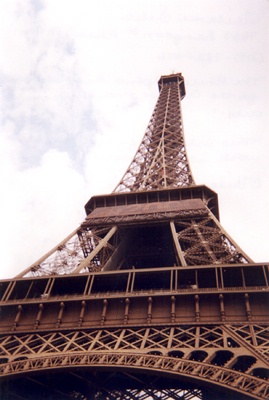All Nonfiction
- Bullying
- Books
- Academic
- Author Interviews
- Celebrity interviews
- College Articles
- College Essays
- Educator of the Year
- Heroes
- Interviews
- Memoir
- Personal Experience
- Sports
- Travel & Culture
All Opinions
- Bullying
- Current Events / Politics
- Discrimination
- Drugs / Alcohol / Smoking
- Entertainment / Celebrities
- Environment
- Love / Relationships
- Movies / Music / TV
- Pop Culture / Trends
- School / College
- Social Issues / Civics
- Spirituality / Religion
- Sports / Hobbies
All Hot Topics
- Bullying
- Community Service
- Environment
- Health
- Letters to the Editor
- Pride & Prejudice
- What Matters
- Back
Summer Guide
- Program Links
- Program Reviews
- Back
College Guide
- College Links
- College Reviews
- College Essays
- College Articles
- Back
The Lord of the Rings by J.R.R. Tolkien
I’ve spent hours in the library looking for the perfect fantasy novel; some of them like Harry Potter, The Inheritance Cycle, and The Ranger’s Apprentice are phenomenal. However, The Lord of the Rings is my favorite. I had only heard of this series four to five times from school friends when I picked up the books and started reading; ten days later, I’d finished the Trilogy. What kept me reading? I had never been introduced to a fictional world so complete and dense. From Bilbo’s love of bacon to a complete explanation of the political settings of the world, Middle-earth, every detail in Tolkien’s creation seems connected, thought through, and organic to his vision.
Tolkien builds an astounding world: there are five sentient species that range from cave dwellers to talking trees; cities are carved out of mountains, built into trees, and floated on water; entire languages are used in the books that have been created from the ground up by the author.The main character, Frodo, and his company all have their own backstories that seem to fit together. It makes me wonder if Tolkien had more time what else might he have imagined. However, it’s the simple things can (that?) make the world feel detailed, such as when a character in the story forgets his coat at home, or when one of Frodo’s companions wants his everyday life back-before his adventures.
The plot of Lord of the Rings is incredibly creative: common farmers team up with different allies, leaders, and armies to bring down a phenomenally powerful warlord, Sauron, on two fronts.This could easily be a long and incoherent storyline if another author included Frodo’s character growth, the history of Middle-Earth, and as many as five long poems in the plot, but through Tolkien’s masterful storytelling and attention to detail, the different subplots all fit together in one large, cohesive tale. For example, after Frodo’s company loses one of their own in a mountain range, they are not only surprised to find him come back to life, but the lost company member turns out to be even more powerful. This wouldn’t make any sense if another writer had tried it, but Tolkien makes the character’s death feel meaningful to the reader. Throughout the story, Tolkien divides and reunites Frodo’s company to give the reader a sense of the scale of Middle-earth and to build tension by using the company’s divided stories to delay and enrich the outcome.
When I meet up with my friends who have read the books, Tolkien’s works always end up in one or two -if not more- of our sentences, because his world is just that immersive. Middle Earth has a 10,000 year history, that includes battles, celebrations, journeys, peace, and everything in between. This history may be for a fantasy world, but fans of the Trilogy persistently see connections between the history of Middle Earth and our own. Some view Sauron’s rise to power as a parallel to Hitler’s party (Tolkien published the Trilogy a few years after World War 2, but denied any connection between his plot and recent world events). According to others, the Ring in Lord of the Rings is a symbol for nuclear power. I think that these interpretations of Tolkien’s work only make the story even more compelling, since if this is what fans came up with, how many other things might have come from Tolkien’s subconscious?
My personal theory relating to the trilogy’s real world connections concerns Tom Bombadil, a character who arguably plays no role in advancing the plot. I believe that Bombadil is Tolkien’s incarnation of himself in Middle-Earth, since Bombadil seems very connected to nature, and the author himself had misgivings about industrialization.
The author also builds a relatable political situation. Much like in our world, different factions of different races exist in Middle Earth and each tries to benefit its own people as much as possible. In Middle Earth though, the different civilized species range from tall, intelligent Elves to Hephaestus-like Dwarves. The Elves prefer to be left alone to safeguard their homeland and the Mirkwood Elves, in particular, shun the Dwarves; the Hobbits want to be left completely alone; while the Men want to fight Sauron directly. Ultimately, the prospect of ending Sauron’s rule give them a reason to work together. Their ultimately working together may be simply something comfortable for Tolkien to write about, but the adventures (and misadventures) of Frodo and his companions braving Sauron remind the reader that even if the goal is obvious, getting there can still be extremely challenging.
Overall, Tolkien’s Middle-earth with its conflicts, characters, and intrigue is the most complete fictional world I’ve encountered yet.

Similar Articles
JOIN THE DISCUSSION
This article has 0 comments.
